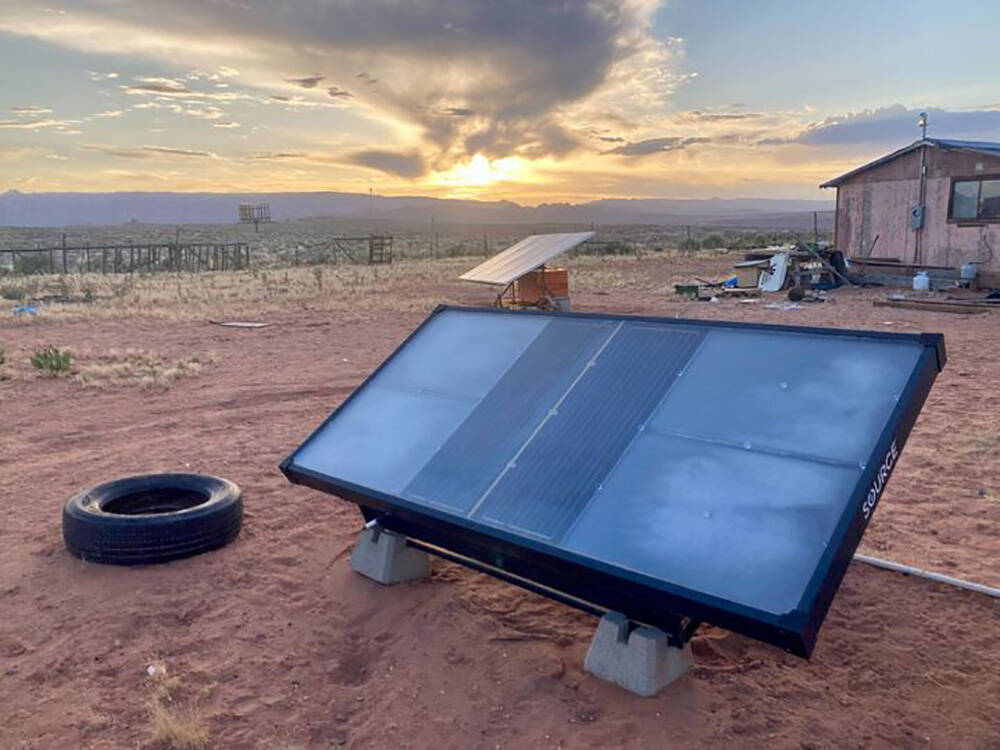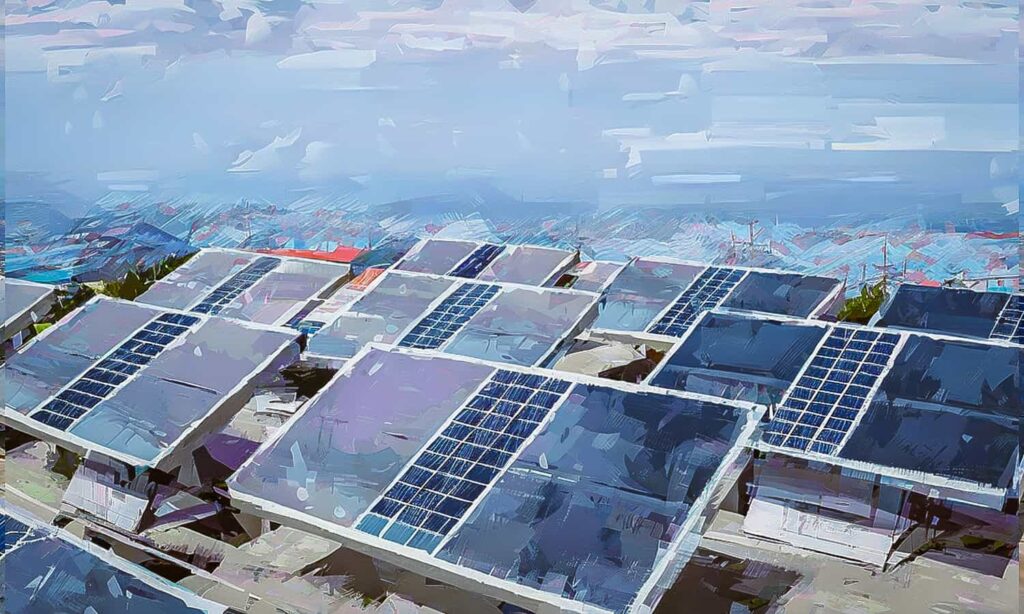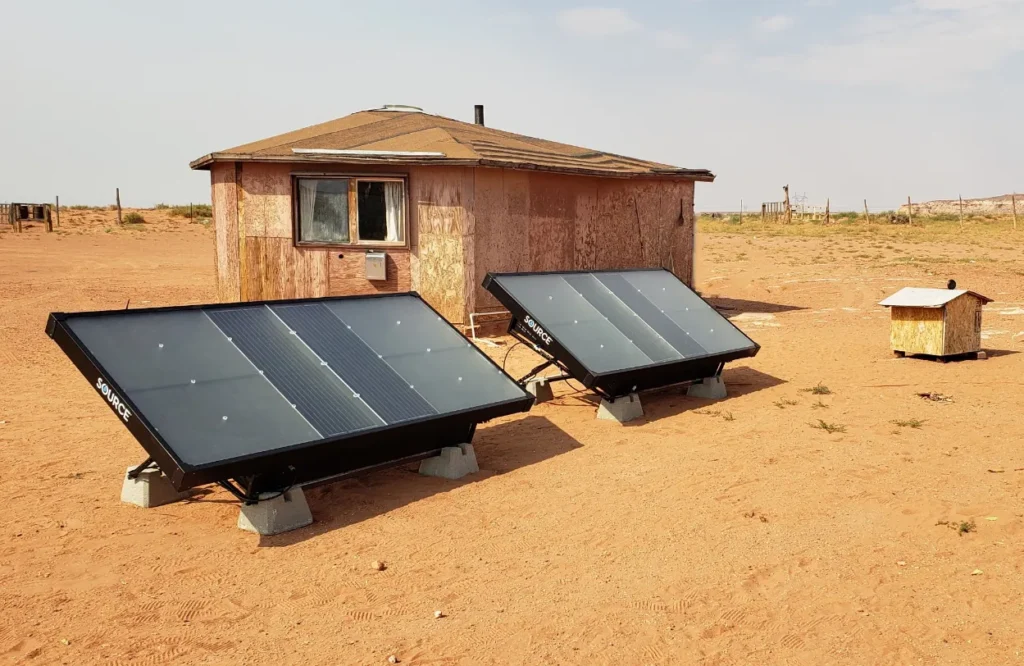As the world grapples with the pressing challenges of climate change, water scarcity, and sustainable energy sources, innovative technologies are emerging to address these issues head-on.
One such groundbreaking solution is the Hydropanel, a revolutionary technology that combines renewable energy and water harvesting to provide a sustainable source of clean drinking water.
In this article, we will delve into the concept of Hydropanels, their functioning, their benefits, and their potential to transform the way we approach water scarcity and energy consumption.
The Hydropanel Concept

Imagine a panel that generates clean drinking water from thin air, using nothing but sunlight and cutting-edge technology.
This concept is at the heart of the Hydropanel, an invention that has the potential to disrupt the traditional water supply chain and alleviate water scarcity in regions facing severe drought conditions.
Developed by Zero Mass Water, Hydropanels are designed to mimic the way trees pull water from the atmosphere through a process known as “aerodynamic water capture.” Each panel contains a material called a “hydrophobic membrane,” which absorbs water vapor from the air, even in arid environments with low humidity levels.
This collected water vapor is then condensed into liquid water, purified, and stored for consumption.
How Hydropanels Work

At first glance, the idea of generating water from thin air may seem like a feat of science fiction.
However, Hydropanels are grounded in scientific principles that have been observed in nature for centuries.
These panels use a process known as “aerodynamic water capture” to mimic the way plants and trees draw moisture from the atmosphere.
1. Water Vapor Absorption
Each Hydropanel is equipped with a hydrophobic membrane, a material that repels water but allows it to pass through as vapor.
When air passes through this membrane, it interacts with the hydrophobic surface, causing water vapor to adhere to the membrane’s surface.
This absorption process occurs even in regions with low humidity levels.
2. Solar-Powered Condensation
The magic truly begins when sunlight interacts with the absorbed water vapor. Hydropanels are fitted with solar panels that provide the energy needed for the next crucial step condensation.
The solar panels power a condensation mechanism that cools the collected water vapor. As the vapor cools, it transforms into liquid water droplets, which are then collected and channeled into a reservoir within the panel.
3. Purification and Mineralization
Once collected, the liquid water undergoes a purification process to ensure its safety for consumption. This process involves exposing the water to ultraviolet (UV) light, which neutralizes harmful microorganisms.
Additionally, a mineralization process ensures that the water is enriched with essential minerals, enhancing its taste and nutritional value.
4. Water Storage and Dispensing
The purified and mineralized water is stored within the Hydropanel, ready to be accessed at any time. A tap or dispenser allows users to draw clean drinking water directly from the panel.
5. Solar-Powered Sustainability
At the heart of the Hydropanel’s functionality is its integration of solar energy. Solar panels installed on the panel’s surface harness the sun’s energy, converting it into electricity to power the condensation process.
This sustainable energy source eliminates the need for external power and ensures that the Hydropanel operates efficiently, even in areas with limited access to electricity.
Benefits Beyond Water Generation
The innovation behind Hydropanels brings about a myriad of benefits that extend beyond water generation
1. Environmental Impact
Hydropanels significantly reduce the need for bottled water and the associated plastic waste, lowering the carbon footprint of water consumption.
2. Localized Water Source
By generating water on-site, Hydropanels empower communities to have a reliable and localized water source, reducing dependence on distant water supply systems.
3. Drought Resilience
Hydropanels offer a lifeline in regions prone to droughts, providing a consistent water source during times of scarcity.
4. Energy Efficiency
The integration of solar energy into Hydropanels contributes to energy-efficient water generation, further promoting sustainable practices.
Benefits of Hydropanels

Hydropanel technology offers a range of benefits that can have a transformative impact on water-scarce regions and beyond:
1. Water Independence:
Hydropanels can provide a localized and reliable source of clean drinking water, reducing dependence on centralized water distribution systems.
2. Renewable Energy Integration:
By utilizing solar energy to power the water capture and purification process, Hydropanels align with sustainable energy practices, reducing the carbon footprint associated with traditional water treatment.
3. Scalability:
Hydropanels can be installed in various locations, from individual households to entire communities, making them adaptable to different scales of water demand.
4. Mitigating Drought Effects:
Hydropanels have the potential to mitigate the effects of drought by providing a consistent source of water, even in regions with limited rainfall.
5. Environmental Impact:
With no need for plastic bottles or transportation of water, Hydropanels contribute to reducing plastic waste and the carbon emissions associated with water transportation.
Empowering Hydropanels With Solar Energy

At its core, the Hydropanel is an embodiment of synergy – an amalgamation of two powerful technologies: solar energy and water vapor absorption.
This marriage of science and engineering is driven by the goal of providing clean and accessible drinking water to regions facing extreme water stress.
The integration of solar energy amplifies the efficacy of Hydropanels and propels their role in reshaping the global water landscape.
1. Solar Panels as Energy Catalysts
Atop each Hydropanel resides an array of solar panels, diligently harnessing sunlight throughout the day.
These panels, composed of photovoltaic cells, convert solar energy into electricity.
This solar-generated electricity serves as the vital energy source that powers the water vapor condensation process within the panel.
2. Self-Sustaining System
The beauty of this integration lies in its self-sufficiency. By generating the necessary energy on-site, Hydropanels circumvent the need for external power sources, minimizing infrastructure complexities and maximizing operational autonomy.
This autonomy is a boon, especially in remote or off-grid locations, where conventional energy access is often a challenge.
How It Works

The process of integrating solar energy into Hydropanels is akin to orchestrating a harmonious dance between sunlight, water vapor, and advanced technology. Here’s how it unfolds:
1. Water Vapor Absorption
The Hydropanel’s hydrophobic membrane beckons water vapor from the air, even in arid environments. This absorption is a crucial first step, ensuring that the panel captures water molecules from the atmosphere.
2. Solar-Powered Condensation
As the absorbed water vapor interacts with the solar-heated surface of the panel, it undergoes a magical transformation.
The solar panels’ electricity drives a cooling mechanism, converting water vapor into liquid droplets through condensation.
This condensation process mimics the way dew forms on the surface of leaves in the early morning.
3. Purification and Storage
The condensed water droplets are then channeled through a purification process that employs ultraviolet (UV) light to neutralize contaminants.
The result is pristine, safe drinking water. The liquid is stored within the Hydropanel’s reservoir, waiting to be tapped by users.
Sustainable Advantages of Solar-Enhanced Hydropanels

The amalgamation of solar energy and Hydropanels transcends technological novelty; it brings forth a multitude of advantages
1. Environmental Stewardship
Solar-powered Hydropanels effectively reduce the carbon footprint associated with conventional water treatment methods, contributing to a greener planet.
2. Energy Efficiency
The reliance on solar energy aligns perfectly with sustainability goals, promoting the efficient utilization of renewable resources.
3. Resilience in Remote Areas
By functioning independently of external energy sources, solar-integrated Hydropanels empower remote communities with a local and reliable water supply, often without access to traditional infrastructure.
4. Water Independence
These panels provide a localized solution to water scarcity, reducing dependency on central water distribution systems and minimizing water transportation logistics.
Challenges and Future Prospects
While Hydropanels offer a promising solution to water scarcity and energy sustainability, there are challenges to consider.
The initial cost of installation and maintenance might be a barrier for some communities, and the technology’s effectiveness may be influenced by factors like humidity levels and sunlight availability.
Looking ahead, continued research and development will likely lead to improvements in efficiency, cost-effectiveness, and overall performance.
As Hydropanels become more widely adopted, economies of scale could help lower costs, making the technology more accessible to a larger population.
Conclusion
The Hydropanel represents a significant leap in sustainable technology, addressing both water scarcity and renewable energy needs simultaneously.
By combining the power of solar energy with innovative water capture and purification mechanisms, Hydropanels have the potential to revolutionize the way we access clean drinking water and reduce our impact on the environment.
As the world faces increasing water challenges due to climate change, the Hydropanel stands as a beacon of hope, showcasing how innovation can pave the way toward a more sustainable and resilient future.
